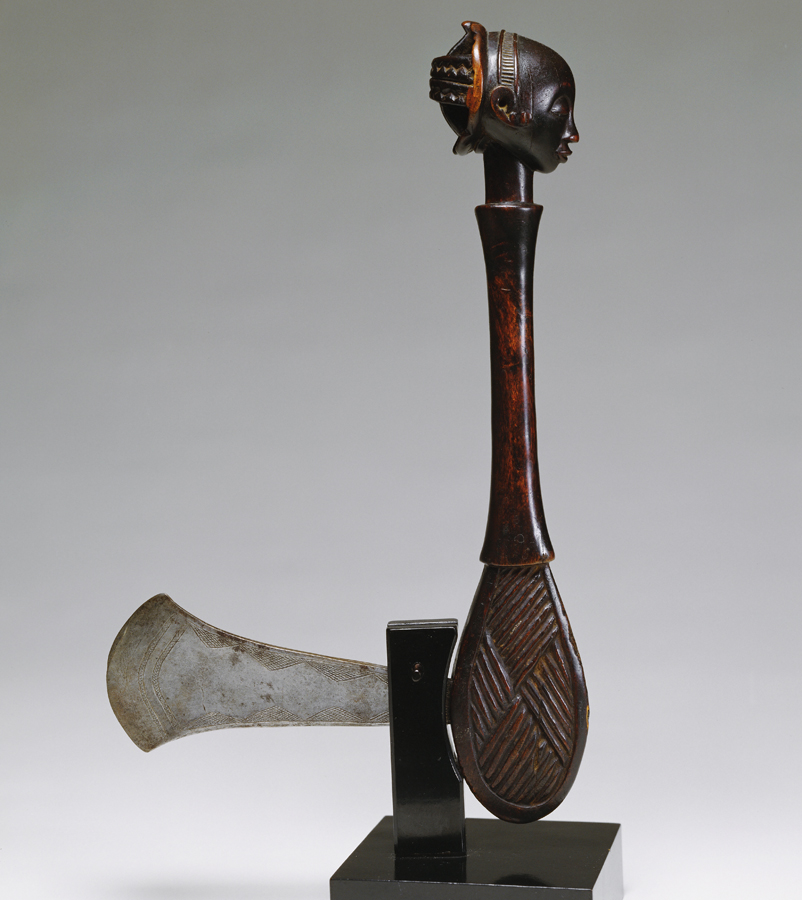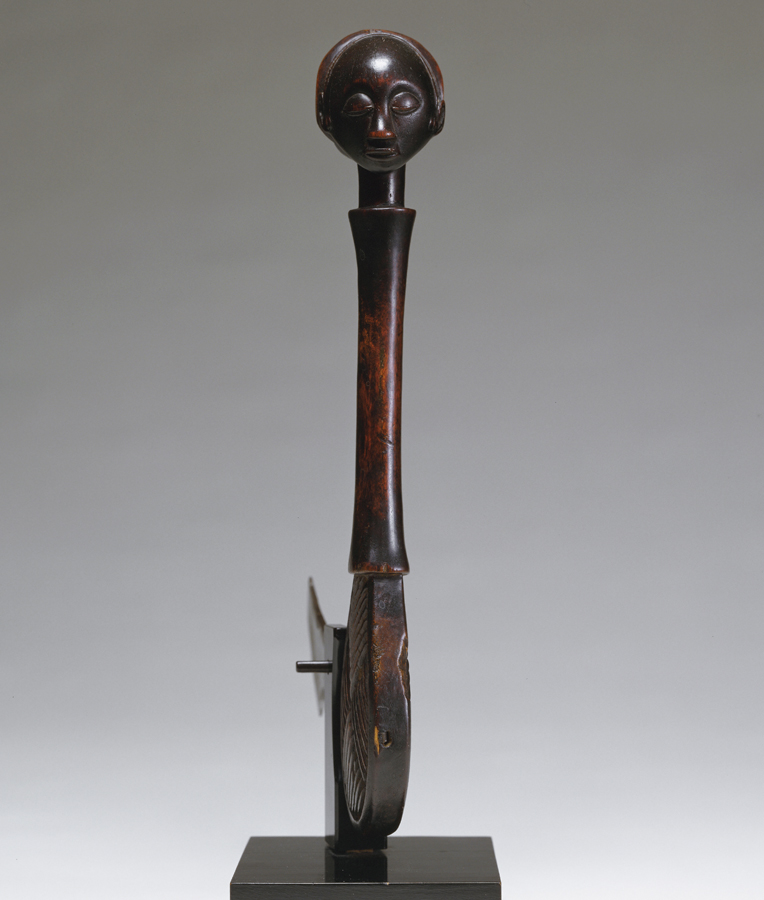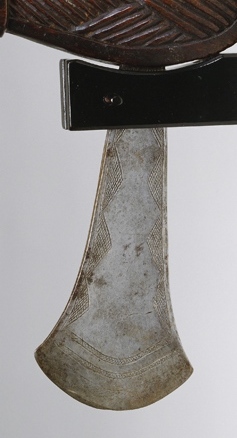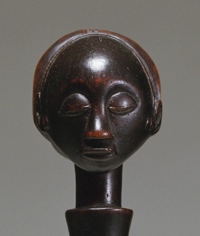What makes an object powerful? Luba ceremonial axes such as this one were not only powerful because of the their blades, but because of the complex ideologies embodied by the iconography. This axe would have likely been made by two skilled artists, a sculptor who made the handle and a metalworker who forged the iron blade. Commissioned by a Luba ruler or court official, this was made to be, and would have been understood as a symbol of power to Lua people. The Luba peoples were historically two related but distinct groups-the Luba Kasai and the Luba Katanga, both situated in the southeast region of what is now the Democratic Republic of the Congo.1 The Luba kingdom reached a height between the seventh and nineteenth century, when Belgian forces began invading as a part of a colonial program. From the years 1908 to 1960 the area which the Luba occupied was under Belgian colonial rule. In 1960, the region gained independence from the Belgian government, unified as the Democratic Republic of Congo. It was during the Belgium’s colonial era when many Luba art objects began to be recognized, circulated and collected by connoisseurs and museums alike.
This axe is one such object. In 1939 the Smith College Museum of Art purchased the axe from Louis Carre, who was a prominent collector and dealer. While the museum did recognize this work as a beautiful work of art in and of itself, little attention was paid to how the axe would have functioned in its original context. In the late 20th century, however, Luba arts and culture became the subject of art historical and anthropological texts and studies through the work of such scholars as Pierre de Maret, Francios Neyt, Thomas Reefe, Allan Roberts, and Mary Nooter Roberts. This scholarship emphasized trying to understand works such as this axe through Luba understandings. The three sections below, Women and Memory, Women and Divine Power, and Women and Royalty use this research to unpack the representational system embodied by this axe.



